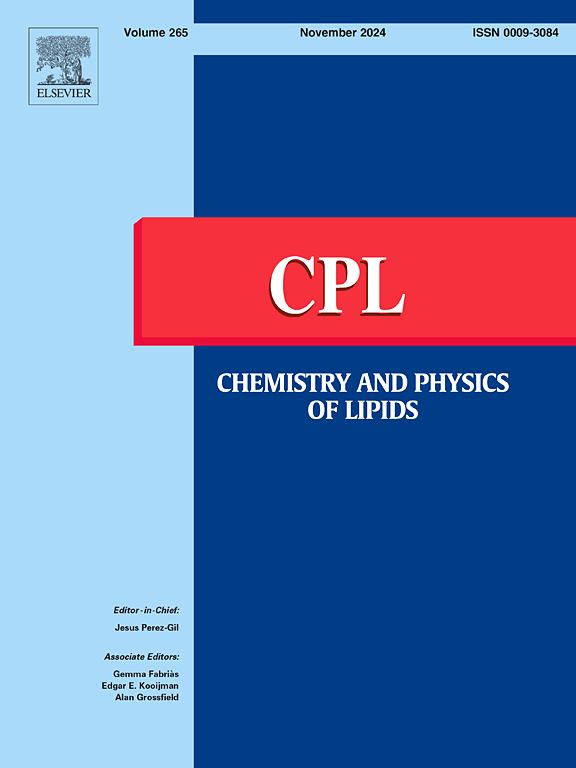有机磷阻燃剂诱导肺细胞表型和脂质组学改变。
IF 2.8
3区 生物学
Q2 BIOCHEMISTRY & MOLECULAR BIOLOGY
引用次数: 0
摘要
有机磷酸酯阻燃剂(OPFRs)由于其阻燃性能被广泛应用于塑料、电子和建筑材料的添加剂。然而,先前的证据表明,OPFRs可能造成潜在的呼吸健康风险,包括气道高反应性、肺功能受损和潜在的致癌作用。本研究利用2D和3D培养模型,评估了7种OPFRs-TBOEP、TPhP、EHDPhP、TDCPP、TEHP、TCP和tcepp对A549肺癌细胞表型和脂质组学特征的影响。TDCPP和TPhP显著降低了细胞活力,而TBOEP引起的活性氧(ROS)增加最多,其次是TPhP、TDCPP和TCP。此外,TPhP、TDCPP、EHDPhP和TBOEP也升高了促炎细胞因子白介素-8 (IL-8)的水平。3D细胞球体暴露于OPFRs 72小时的脂质组学分析显示,低(25 μM)和高(100 μM)剂量下,每种化合物的脂质谱都不同。观察到共同的特征,特别是在高剂量下,包括三酰基甘油、二酰基甘油、神经酰胺、醚连接的磷脂酰乙醇胺和磷脂酰肌醇种类显著增加。这些影响在TPhP、TDCPP、EHDPhP、TCP和TBOEP中更为明显。脂滴形成的可视化证实了甘油三酯的积累,表明能量储存增强。结果表明,关键毒理学途径的破坏,包括氧化应激、炎症信号(IL-8上调)和细胞凋亡(神经酰胺积累),都与肺部疾病有关,如COPD和纤维化。这些结果为评估与OPFRs有关的健康风险提供了基础,突出了进一步研究慢性低剂量暴露水平的必要性。本文章由计算机程序翻译,如有差异,请以英文原文为准。
Phenotypic and lipidomic alterations in lung cells induced by organophosphate flame retardants
Organophosphate flame retardants (OPFRs) are widely used as additives in plastics, electronics, and construction materials due to their flame-retardant properties. However, previous evidence suggests that OPFRs may pose potential respiratory health risks, including airway hyperresponsiveness, impaired lung function, and potential carcinogenic effects. This study evaluated the effects of seven OPFRs—TBOEP, TPhP, EHDPhP, TDCPP, TEHP, TCP, and TCEP—on the phenotype and lipidomic profile of A549 lung cancer cells, using both 2D and 3D culture models. TDCPP and TPhP significantly reduced cell viability, while TBOEP caused the highest increase in reactive oxygen species (ROS), followed by TPhP, TDCPP, and TCP. Moreover, TPhP, TDCPP, EHDPhP, and TBOEP also elevated the levels of pro-inflammatory cytokine interleukin-8 (IL-8). The lipidomic analysis of 3D cell spheroids exposed to OPFRs for 72 h revealed distinct lipid profiles for each compound at low (25 μM) and high (100 μM) doses. Common features were observed, particularly at high doses, including significant increases in triacylglycerol, diacylglycerol, ceramide, ether-linked phosphatidylethanolamine, and phosphatidylinositol species. These effects were generally more pronounced for TPhP, TDCPP, EHDPhP, TCP, and TBOEP. The accumulation of triglycerides, indicative of augmented energy storage, was confirmed by the visualization of lipid droplets formation. Results suggest disruptions in key toxicological pathways, including oxidative stress, inflammatory signaling (IL-8 upregulation), and apoptosis (ceramide accumulation), all implicated in lung diseases, such as COPD and fibrosis. These results provide a basis for assessing the health risks associated with OPFRs, highlighting the need for further research on chronic low-dose exposure levels.
求助全文
通过发布文献求助,成功后即可免费获取论文全文。
去求助
来源期刊

Chemistry and Physics of Lipids
生物-生化与分子生物学
CiteScore
7.60
自引率
2.90%
发文量
50
审稿时长
40 days
期刊介绍:
Chemistry and Physics of Lipids publishes research papers and review articles on chemical and physical aspects of lipids with primary emphasis on the relationship of these properties to biological functions and to biomedical applications.
Accordingly, the journal covers: advances in synthetic and analytical lipid methodology; mass-spectrometry of lipids; chemical and physical characterisation of isolated structures; thermodynamics, phase behaviour, topology and dynamics of lipid assemblies; physicochemical studies into lipid-lipid and lipid-protein interactions in lipoproteins and in natural and model membranes; movement of lipids within, across and between membranes; intracellular lipid transfer; structure-function relationships and the nature of lipid-derived second messengers; chemical, physical and functional alterations of lipids induced by free radicals; enzymatic and non-enzymatic mechanisms of lipid peroxidation in cells, tissues, biofluids; oxidative lipidomics; and the role of lipids in the regulation of membrane-dependent biological processes.
 求助内容:
求助内容: 应助结果提醒方式:
应助结果提醒方式:


